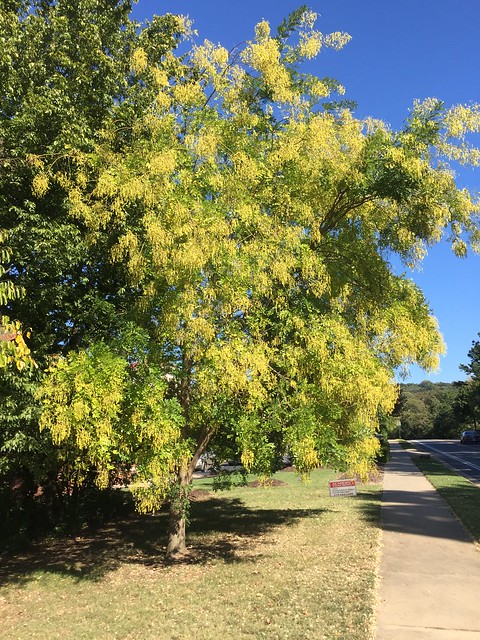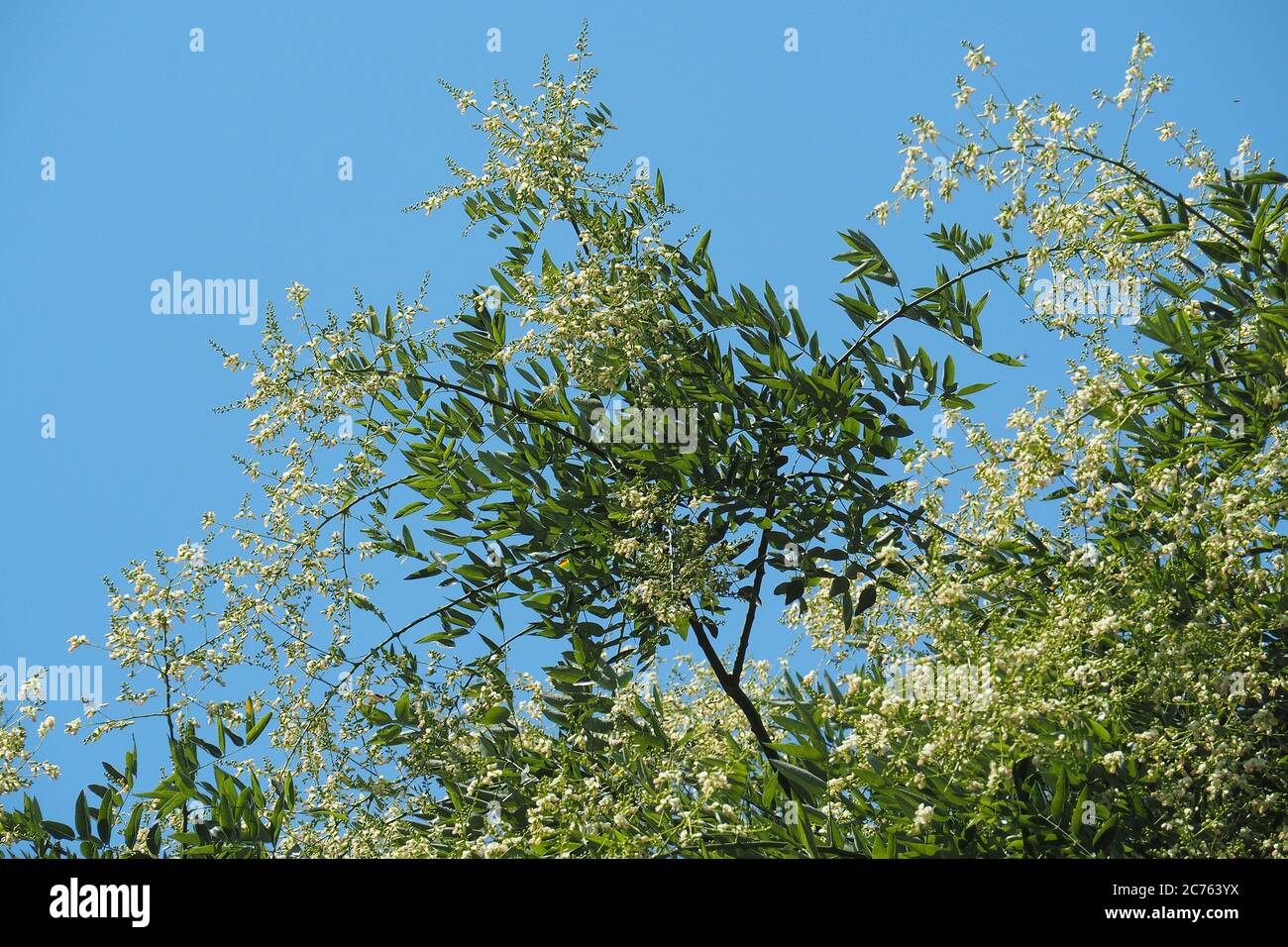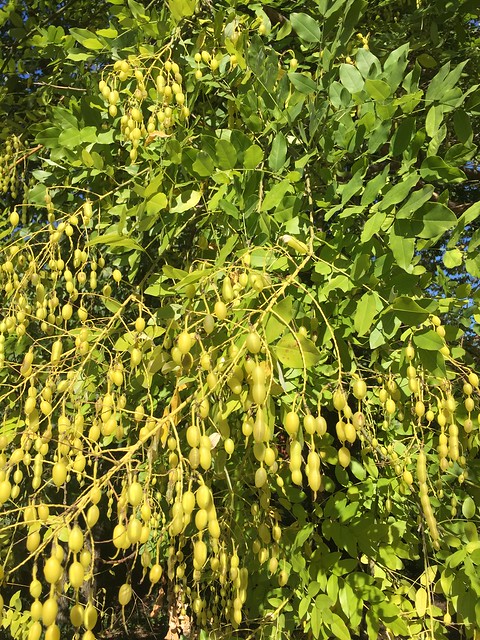japanese pagoda tree invasive
Japanese Pagoda Tree Styphnolobium japonicum Kentucky Coffeetree Gymnocladus dioicus Trees INVASIVE. Japanese Angelica Tree Aralia elata.

Japanese Pagoda Tree Chinese Scholar Tree
Preferred Scientific Name.
. In the United States the tree is by and large considered non-invasive. Pagoda Dogwood Cornus alternifolia Canker disease is a problem in Eastern NY Witch Hazel Hamamelis virginiana. The Pagoda tree is capable of growing in all soil types although it grows best in well drained loamy soils and in full sun conditions.
Surface roots are usually not a problem Winter interest. Image 5399189 is of Japanese pagoda tree Styphnolobium japonicum trees. The species tree must be at least 10-years-old to bloom but the cultivar Regent blooms at six to eight-years-old.
Sapindus drummondii Western Soapberry An attractive small native tree with glossy compound leaves and excellent deep yellow-gold fall color. It is by Robert Vidéki at Doronicum Kft. Flowers are showy creamy-white on upright panicles up to.
Once the Japanese pagoda tree is. Please contact us if a state or federal list needs to be updated. It showed exceptional vigor and was drastically different from the.
Styphnolobium japonicum L Schott. 4 m in height. Are Japanese pagoda trees invasive.
Styphnolobium japonicum L Schott previously. Palmatum plantanoides pseudoplatanus Japanese Norway Sycamore maple Invasive Actinidia arguta Hardy kiwi Threat Aegopodium podagraria Goutweed Invasive Agrostis capillaris Colonial bent-grass Invasive Ailanthus altissima Tree of Heaven Invasive Akebia quinata Five-leaved akebia Invasive Albizia julibrissin Mimosa Invasive. The shoots including the pods seem to be suitable as fodder but some plant parts especially the pods.
4 to 5 m in height. The domestication of this tree makes it difficult for it to survive without human care. The Japanese pagoda tree is often grown as a shade tree in lawns or on patios however flowers and seedpods often leave stains on pavement.
Being native in temperate and subtropical regions. The following species have been reported to be invasive in natural areas in the U. In the United States the tree is by and large considered non-invasive.
The tree is also used as a street tree since it tolerates urban pollution. The Japanese pagoda tree Sophora japonica or Styphnolobium japonicum is a showy little shade tree. Foliage of Scholar Tree.
The Japanese pagoda tree is also called the Chinese scholar tree and the honey tree. In the United States the tree is by and large considered non-invasive. Staghorn Sumac Rhus typhina Dissecta Cutleaf cultivar will spread Amur Cork Tree Phellodendron amurense.
Sah-FOR-uh juh-PAWN-nih-kuh Common names. No special winter interest Outstanding tree. Fruits make very slippery ground when they fall.
Under certain environmental conditions some tree species may develop a multi-stemmed or short growth form of less than 13 ft. Japanese Pagoda Japanese pagoda is a large deciduous tree native to China It is an upright forming a lacy canopy of dark green pinnate leaves. Sophora japonica Princeton Upright Pronunciation.
It is resistant to pests drought and pollution. The soil should drain extremely well so choose sandy loams. It is hardy to -25F 317C.
How do you care for a Japanese pagoda tree. Sophora japonica Where to Look. This species does not appear on any state or national invasive species lists.
Honeylocust Gleditsia triacanthos var. The domestication of this tree makes it difficult for it to survive without human care. Native Ecosystems In the United States the tree is by and large considered non-invasive.
Growing Japanese Pagodas If you want the ideal location for this tree plant it in full sun in soil that is rich in organic content. Little if any potential at this time Ozone sensitivity. Hardwood Trees Styphnolobium japonicum L Schott.
Is Sophora japonica Evergreen. The domestication of this tree makes it difficult for it to survive without human care. Japanese Angelica Tree Aralia elata Pagoda Dogwood Cornus alternifolia Staghorn Sumac Rhustyphina Laciniata Cutleaf cultivar will.
Seed pods appear in the summertime which can cause serious litter on the ground. In the United States the tree is by and large considered non-invasive. NC State Universitys legendary plantsman the late JC Raulston found this wild plant in 1985 while visiting Korea.
GENERAL INFORMATION Scientific name. It is susceptible to certain diseases and pests making it overall a fairly vulnerable species. The domestication of this tree makes it difficult for it to survive without human care.
Is Japanese pagoda tree invasive. A delightful shade tree it doubles as an ornamental in the garden. Trees are perennial woody plants with a single stem trunk normally greater than 13 to 16 ft.
Japanese pagoda tree is well adapted to dry weather conditions. The Japanese pagoda tree is often called the Chinese scholar tree. It offers frothy flowers when in season and fascinating and attractive pods.
A clusters of creamy white-green fragrant flowers appear in summer. Some tree species are invasive you need to follow biosafety procedures that apply to your planting site. Styphnolobium japonicum commonly called Japanese pagoda tree or Chinese scholar tree is native to China and Korea but not Japan.
The first specimens seen in the west were gained from Japanese sources in the 1750 s hence its classification as a Japanese tree. It is a medium to large deciduous tree that typically matures to 50-75 less frequently to 100 tall with a broad rounded crown. Tree has outstanding ornamental features and could be planted more Invasive potential.
Sophora japonica-- Scholar Tree Page 3 Other Figure 3. Princeton Upright Scholar Tree Princeton Upright Japanese Pagoda Tree. This plant is an invasive species in North Carolina Description.
Japanese pagoda tree is a deciduous species that grows quickly into a 75-foot 23 m tree with a broad rounded crown.

Sophora Japonica Pendula Trees Marcopolo Plants Shade Trees Fast Growing Shade Trees Garden Trees

Japanese Pagoda Tree Styphnolobium Japonicum Fabales Fabaceae Leguminosae 5539401

Japanese Pagoda Tree Styphnolobium Japonicum Fabales Fabaceae Leguminosae 5396099

Japanese Pagoda Tree News From Rockcliff Farm
Japanese Pagoda Tree Becoming Popular In U S Cities What Grows There Hugh Conlon Horticulturalist Professor Lecturer And Gardener

Japanese Pagoda Tree News From Rockcliff Farm

Japanese Pagoda Tree News From Rockcliff Farm

Japanese Pagoda Tree News From Rockcliff Farm

Japanese Pagoda Tree Japanischer Schnurbaum Styphnolobium Japonicum Sophora Japonica Kozonseges Pagodafa Japanakac Stock Photo Alamy

Japanese Pagoda Tree Deciduous 15m 20m High Seed Pods Japanese Pagoda Amazing Gardens Tree

Japanese Pagoda Tree Chinese Scholar Tree
A Japanese Pagoda Tree Sophora Japonica L Planted In A Roadside Download Scientific Diagram
Japanese Pagoda Tree Becoming Popular In U S Cities What Grows There Hugh Conlon Horticulturalist Professor Lecturer And Gardener

Kew Gardens Planted In 1762 Our Japanese Pagoda Tree Facebook

Japanese Pagoda Tree News From Rockcliff Farm

Styphnolobium Japonicum Landscape Plants Oregon State University

Japanese Pagoda Tree Styphnolobium Japonicum Fabales Fabaceae Leguminosae 5539402

